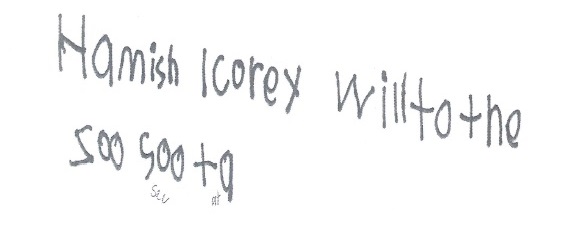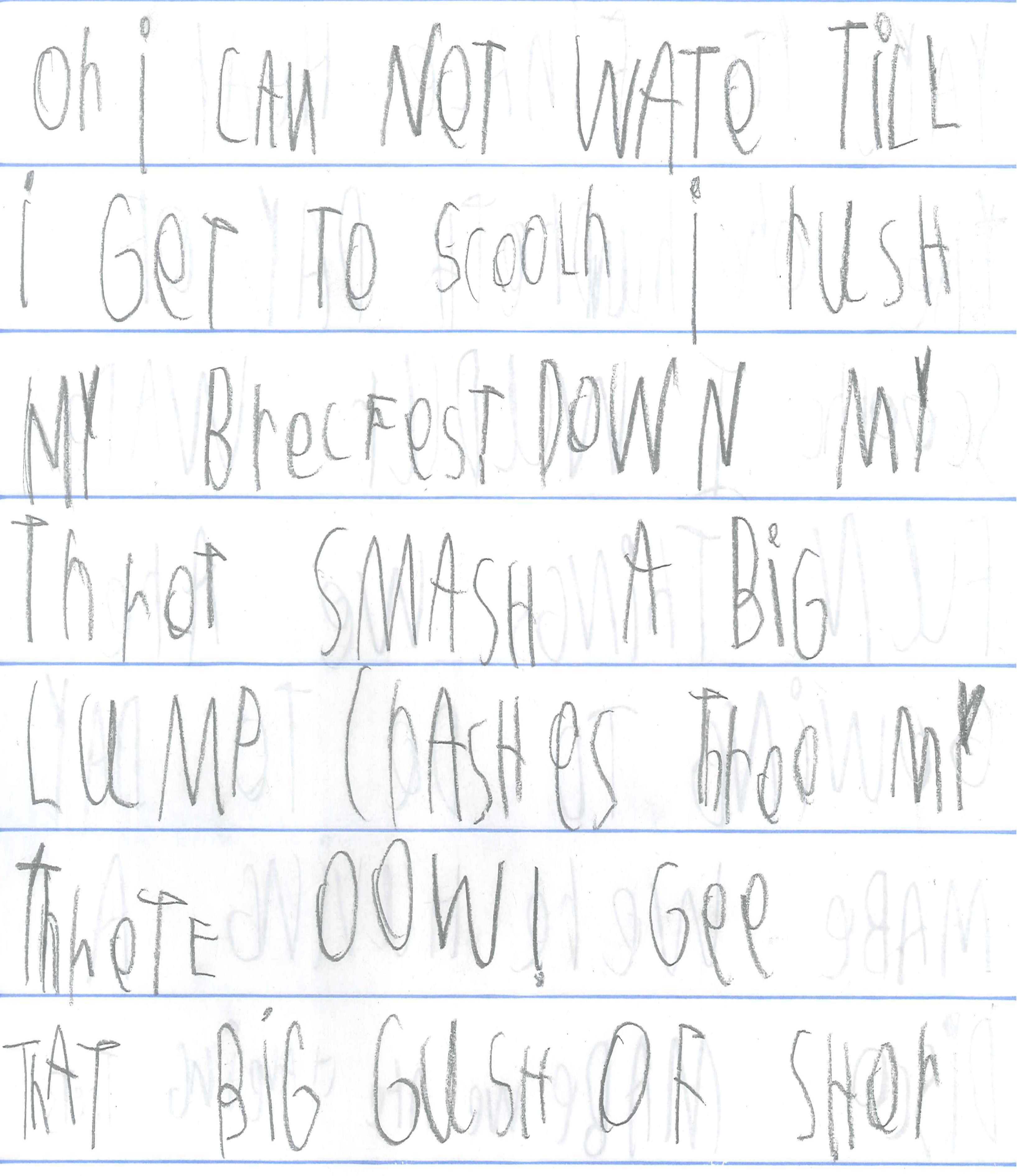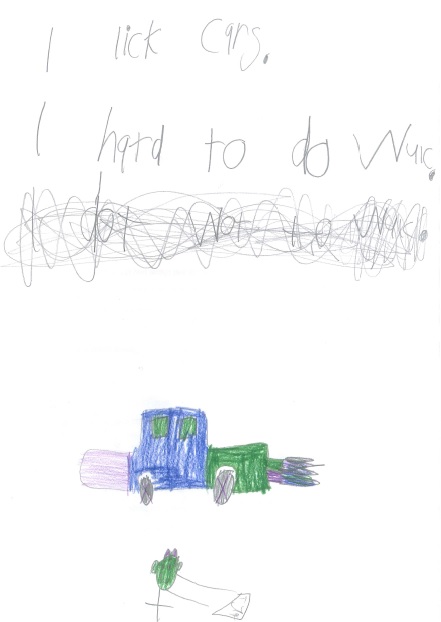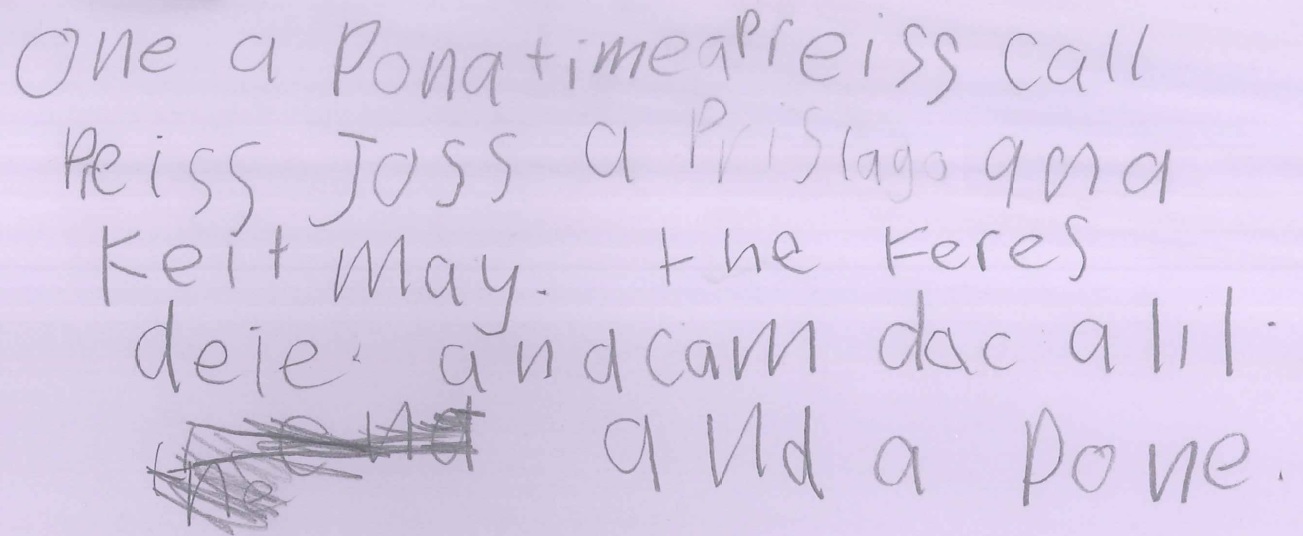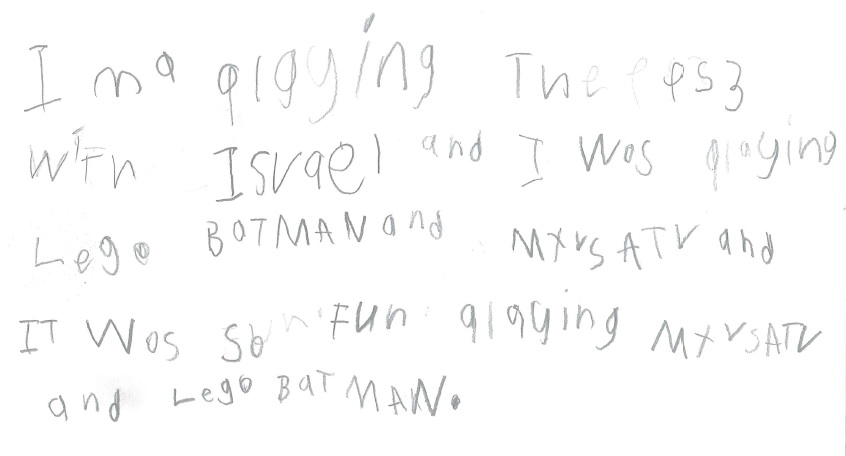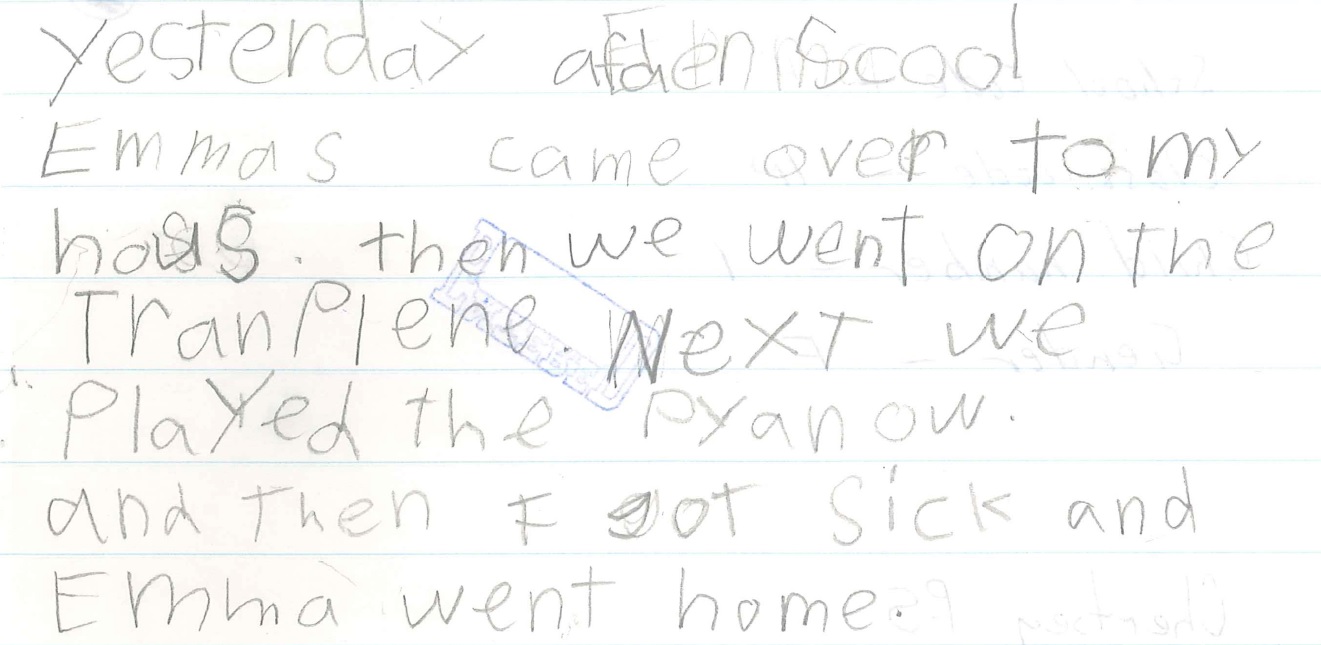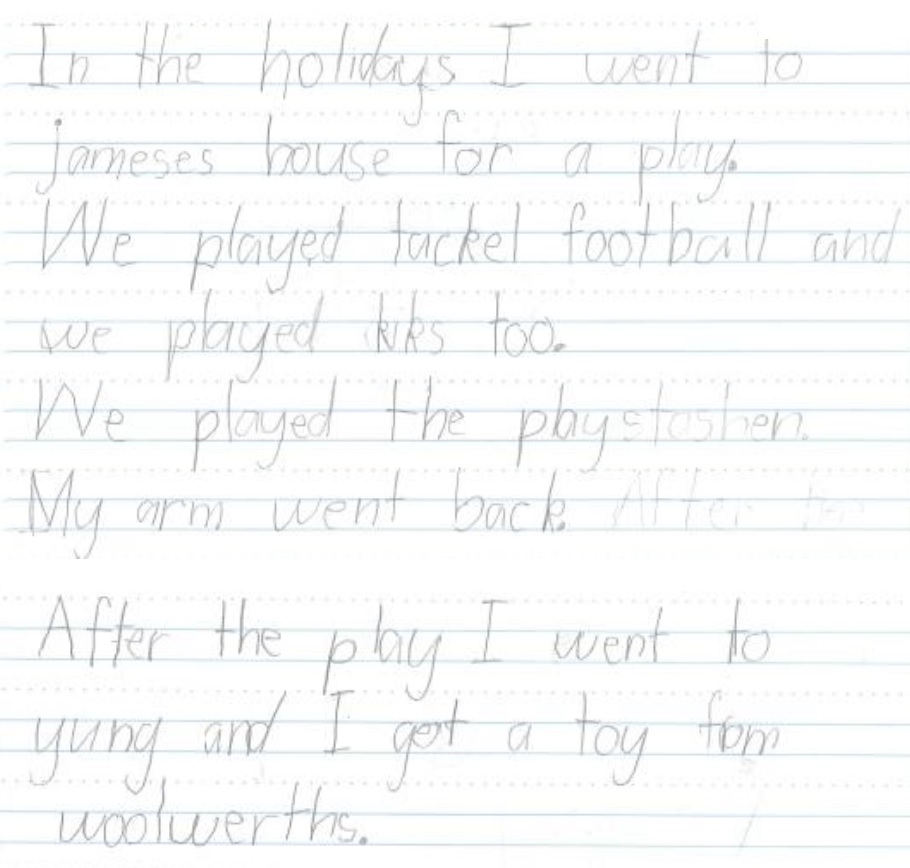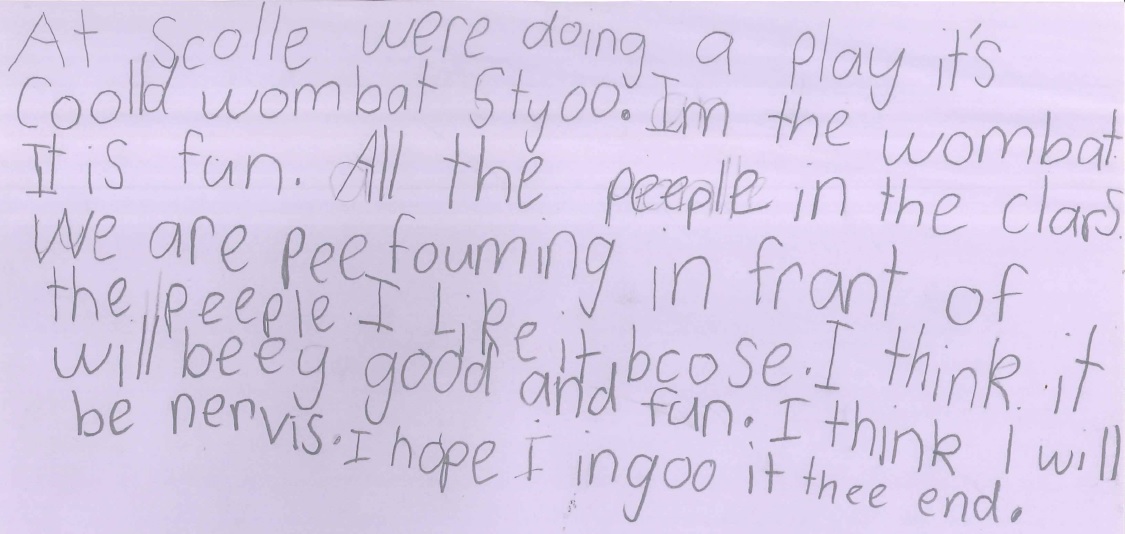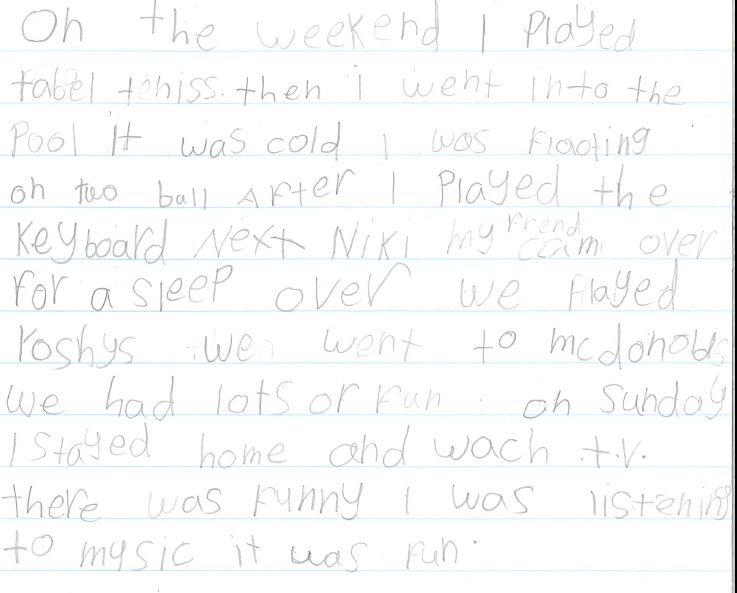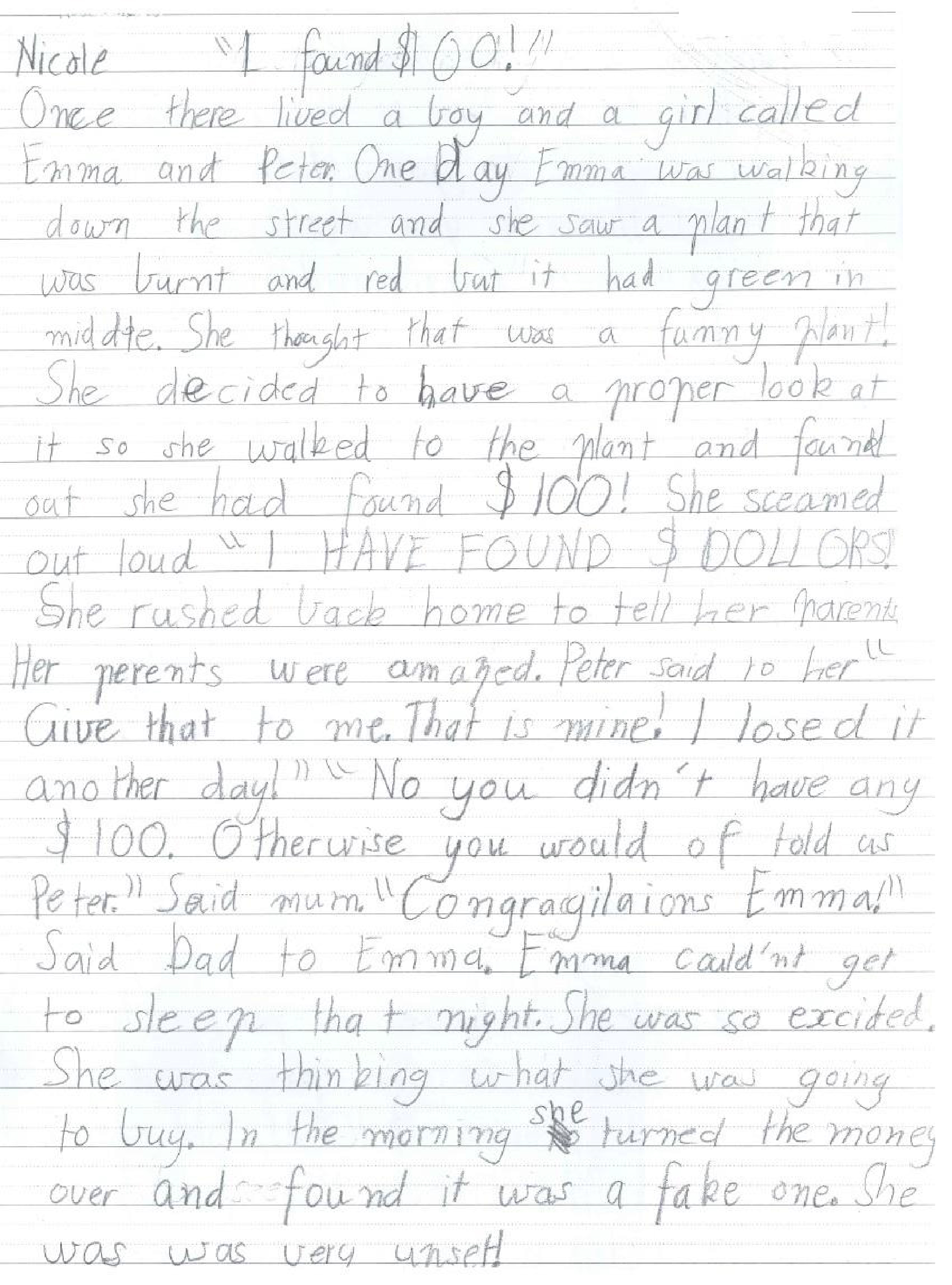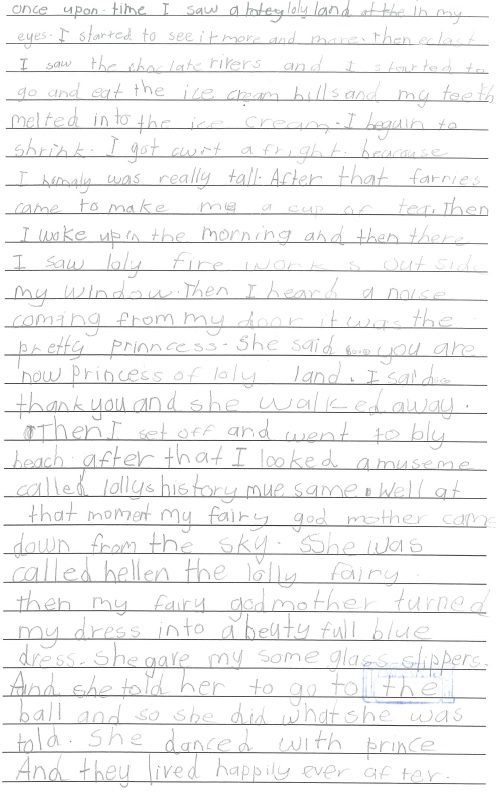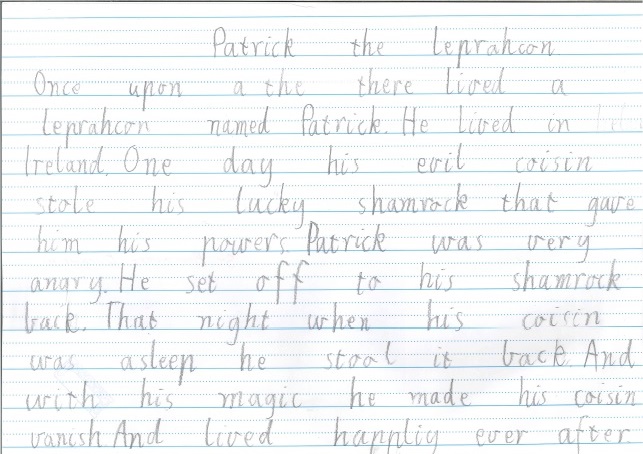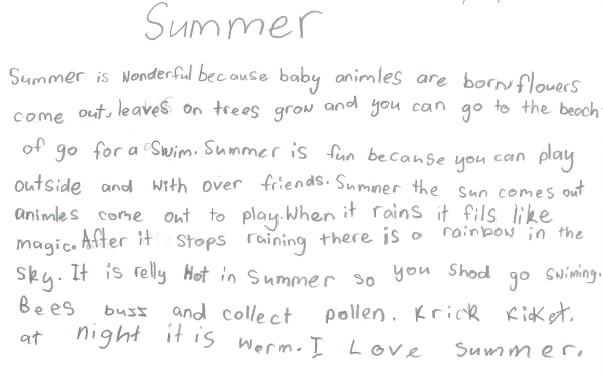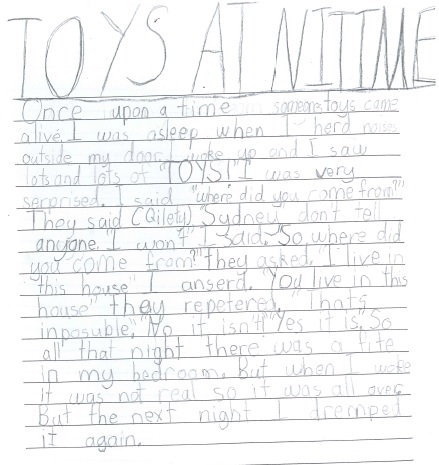Continuum
Text Structure
Sentence structure & Grammatical features
Vocabulary
Spelling
Punctuation
Handwriting/ Legibility
1
No clear message.
ExampleRandom words.
ExampleRecords word of personal significance – own name, family members.
ExampleRandom letters/letter like symbols.
ExampleNo evidence of punctuation.
ExampleLetter like forms with some recognisable letters.
Example2
One or more ideas (not related).
ExampleShows an awareness of correct sentence parts including noun/verb agreement. Meaning may be unclear.
ExampleUses familiar, common words (e.g. like, went) and one, two and three letter high frequency words (e.g. I, my, to, the, a, see, me).
ExampleSemi-phonetic, consonant framework, alongside representation of dominant vowel sounds.
Correct spelling of some two and three letter high frequency words (e.g. the, my, to, can).
ExampleSome use of capital letters and/or full stops.
ExampleMix of upper and lower case letters and/or some reversals/distortions
(e.g. hnr / ad / bp / vy / i l).
Example3
Two or three related ideas. May also include other unrelated ideas.
ExampleUses simple clauses, with nouns, verbs, adverbs, which may be linked by "and". Meaning clear.
ExampleEveryday vocabulary, for example Oxford first 307 word list plus proper nouns (particular to the child’s cultural context e.g Fruit Fly Circus, Sydney Opera House).
ExamplePhonetic spelling – plausible attempts with most sounds in words represented.
Correct spelling of three and four letter high frequency words (e.g. the, like, come, have, went).
ExampleCorrect use of capital letters & full stops at the start and end of sentences.
ExampleMostly correct letter formations yet may contain poor spacing, positioning, or messy corrections.
Example4
Four or more sequenced ideas. Clearly connected.
ExampleUses simple and compound sentence/s with appropriate conjunctions (e.g. and, but, then).
Use of adverbial phrases to indicate when, where, how or with whom.
ExampleUses a range of vocabulary, including topic specific words (e.g. A story about going to the zoo might include animal names and behaviours).
ExampleUse of orthographic patterns or common English letter sequences. If incorrect they are plausible alternatives (e.g. er for ir or ur; cort for caught).
Use of some digraphs (ck, ay).
Correct use of inflections (ed, ing).
Correct spelling of common words (e.g. was, here, they, this).
ExampleSome use, either correct or incorrect, of any of the following:
- Proper noun capitalisation,
- Speech marks,
- Question mark,
- Exclamation mark,
- Commas for lists,
- Apostrophe for possession.
Letters correctly formed, mostly well spaced and positioned.
Example5
Evidence of structure and features of genre (text type). eg. recount, narrative, report letter.
ExampleUses a variety of sentence structures: simple, compound and complex.
Pronoun reference is correct to track a character or object over sentences.
ExampleDemonstrate a variety of vocabulary choices. Includes descriptive or emotive language.
ExampleUse of some irregular spelling patterns (e.g. light, cough).
Application of spelling rules (e.g. hope/hoping, skip/skipping).
Correct spelling of more complex common words (e.g. there, their, where, were, why, who).
ExampleUses a range of punctuation correctly.
ExampleRegularity of letter size, shape, placement, orientation and spacing.
Example6
Complex text which shows strong evidence of the features of text type, purpose and audience.
ExampleDemonstrates variety in sentence structures, sequence length, and uses a range of sentence beginnings.
Sentences flow with logical sequence throughout the text and show a consistent use of tense.
ExampleCorrect use of unique field or technically specific vocabulary.
Use of figurative language such as metaphor and/or simile.
ExampleCorrect spelling of most words including multisyllabic and phonetically irregular words.
Making plausible attempts at unusual words.
ExampleDemonstrates control over a variety of punctuation to enhance text meaning.
ExampleCorrect, consistent, legible, appearing to be fluent
Example





